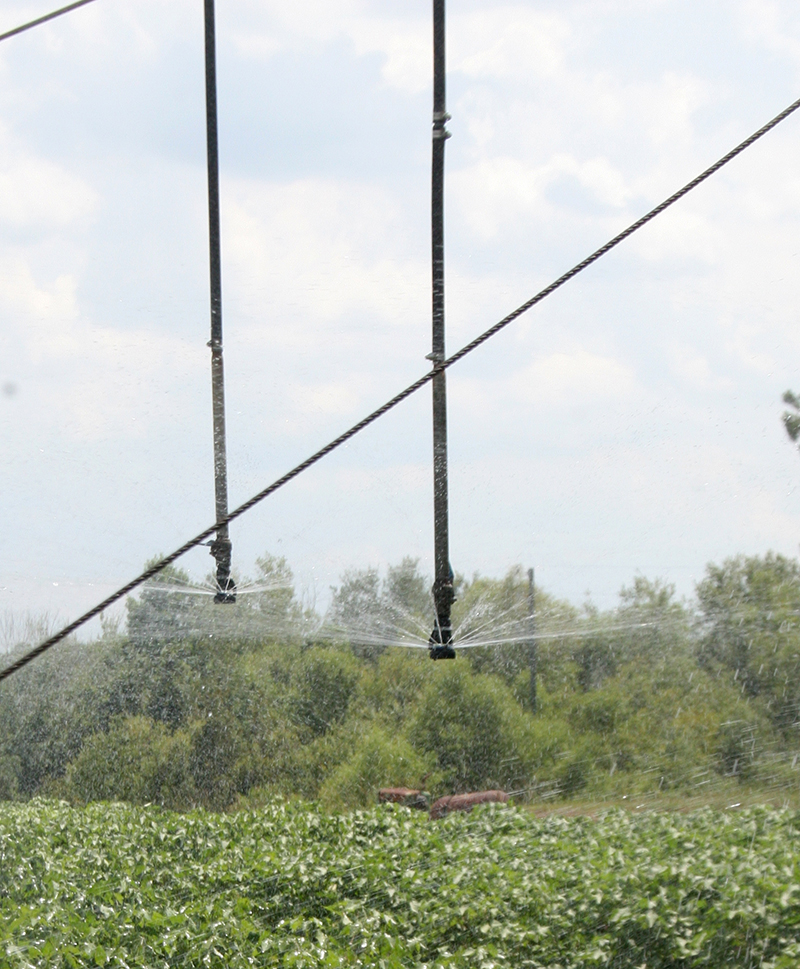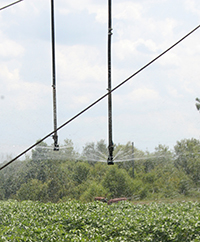Decreasing irrigation for cotton crops during the early season may not affect yields and could save growers more than 54,000 gallons of water per acre, according to University of Georgia researchers.
John Snider, UGA Cooperative Extension cotton physiologist, conducted research trials to determine early-season, sensor-based irrigation thresholds for cotton crops. He tried to determine the minimum amount of water a young cotton plant required without affecting the crop’s yield.
For two years, Snider analyzed the impact of dry early-season thresholds compared to wet early-season thresholds. The approach used to learn dry early-season thresholds produced the same yields compared to the wet early-season thresholds and reduced water used over the growing season by as much as 2 inches per acre.
“This (study) decreased irrigation water use and also minimized risks,” Snider said. “This further emphasizes the need for efficient irrigation scheduling and the effectiveness of remotely sensed, soil-moisture-based methods in limiting early-season irrigation without penalizing potential yields.”
Snider recommends that farmers use sensor-based irrigation scheduling to better monitor their irrigation applications. By limiting the amount of excess irrigation applied early in the growing season, a farmer saves water and reduces the energy costs paid to pump water to irrigate the cotton crop.
Applying too much water to a cotton crop can cause the plants to produce excess vegetative growth. The plant then applies less energy to what is needed for fruit production, Snider said. Overwatering can also negatively impact the environment by increasing nutrient runoff and reducing stream flows.
Underwatering, however, slows the plant’s cell expansion. Even mild drought stress can result in a smaller plant with smaller leaves and decreased capacity for photosynthesis, which in turn means fewer carbohydrates to fuel growth and potentially fewer fruiting sites on the plant, Snider said.
It’s a delicate balance, and soil moisture sensors let farmers know when their cotton is in drought stress and needs water.
“Without a doubt, especially during these hot, dry conditions that our cotton plants are growing in, water is a resource these plants can ill afford to do without. As the growing season moves into the summer and if the dry conditions continue, those water requirements become even more important,” Snider said. “I just want our farmers to also be mindful of the risks associated with applying too much water.”
For more information about Georgia cotton production, see www.ugacotton.com.








.jpg)